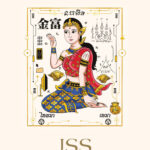Wat Damnak is a good example of engaged Buddhism. Within its walls, it houses a language center, a weaving center, a primary school, charity administration offices, as well as the library and offices of the Center for Khmer Studies. You can find out more about them at:
There is a picture of Mahasi Sayadaw, the renowned Burmese meditation master, on the wall of their offices but it doesn’t seem that there is any system or course of meditation. That said, although the organization claims in some of its publicity material to be non-religious, it quite clearly is. It’s run by two very hard-working monks and teaches students about Buddhism. And no bad thing. A problem with many charitable organizations – particularly those concerned with education – is that they do not follow or communicate with local customs, values and beliefs. Having worked in Thailand for an organization who followed a religion made up in India in the 60s – although I have enormous respect for some of the work they do, I think my attitude towards their creed is best summed up in one of their own hymns, ‘before the big bang there was only love, love, love’ – and the numerous problems and misunderstandings that this caused, I’m very keen to see how well a place like Wat Damnak functions.
I was able to have an interview with the organization’s founder, Venerable Somnieng. It is clear that he is a very busy man. He has a brisk, managerial manner about him. Although he is clearly very willing to give up some of his time, one gets the impression that several more pressing practical matters are buzzing around his head at the same time.
Venerable Somnieng told me that he had never heard of ‘engaged Buddhism’ until after he had founded Life and Hope Angkor and been an engaged Buddhist for several years. He told me that it had not really been as a Buddhist that he set up these charitable institutions but as a Cambodian citizen coming for a poor community. It seemed obvious to him, he said, that he should do what he could. He told me that he had been raised by his mother and several siblings and saw how, because of their poverty, how the community and even their extended family ignored them.
One of Venerable Somnieng’s favorite sayings of the Buddha was undoubtably: “By birth, one is not an outcast, by birth, one is not a noble; but by action one is an outcast, by action one is a noble.” At the time, of course, India was divided into several castes designated by birth and this was one of the Buddha’s most enduring and endearing messages. Many of the people in the area around Siem Reap – despite the wealth of the town itself – live in poverty, with very little hope. Somnieng believes that it is important to make a distinction between those who live in poverty but have hope and those who simply have no hope. Without hope, without something to strive towards (and this by no means need be an ambition for wealth, fame or respect) we are very apt to fall into despair.
Although he says frankly that it was not his training in Buddhist teachings that led him to charitable works – although, as he said, it’s impossible to be sure – he did mention that there was a change in his management style after he had begun to practice meditation. At only twenty years old, he was made the Vice-Abbot of Wat Damnak, a large and importantly placed temple. While in general having few regrets about his career, he does feel uncomfortable about the way he resolved some problems in his early days of authority. Some young monks were found to be acting inappropriately and, as he said, ‘I reacted with my emotion, with my anger’ and used the threat of his authority in order to scare them into submission. He felt bad about having acted in this way and began to meditate. Through this, he began to be able to distinguish more clearly between actions motivated by emotion and actions guided through wisdom, compassion. Since then, he has had no regrets as he built Wat Damnak and Life and Hope into what it is today.
Although we say in Buddhism that ‘ignorance is the root of all suffering’, in modern times it seems to me that obligation to educate others is often missing. Many temples in South East Asia can seem rather aloof from the communities which support them. It is very heartening to see at Wat Damnak to see a place at the heart of its community, a place that offers hope through education and guidance and so gives life to the community.







